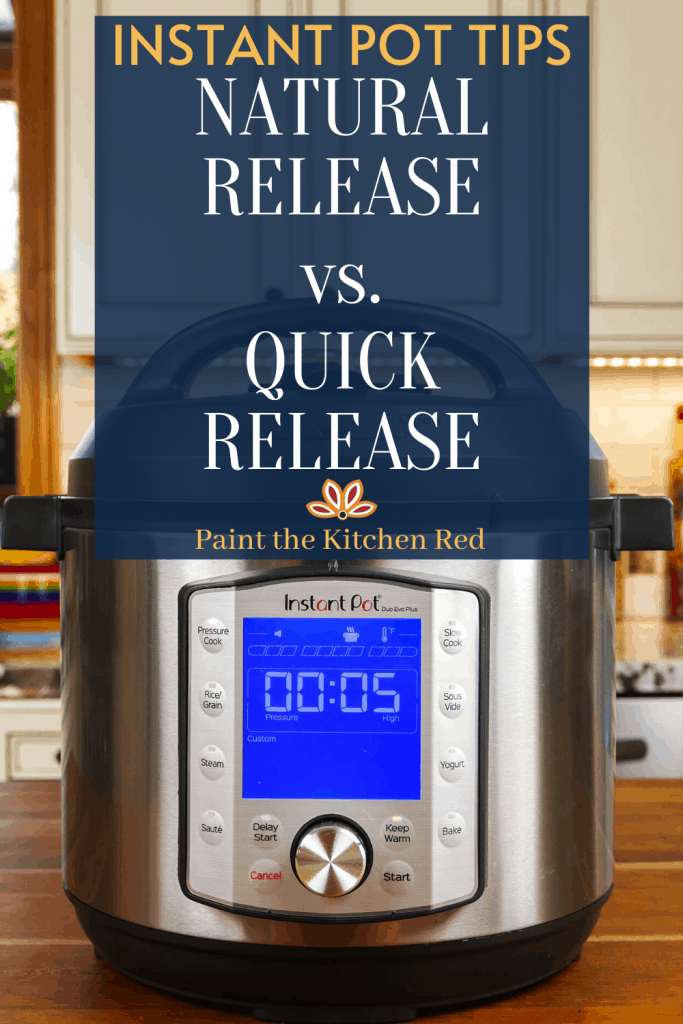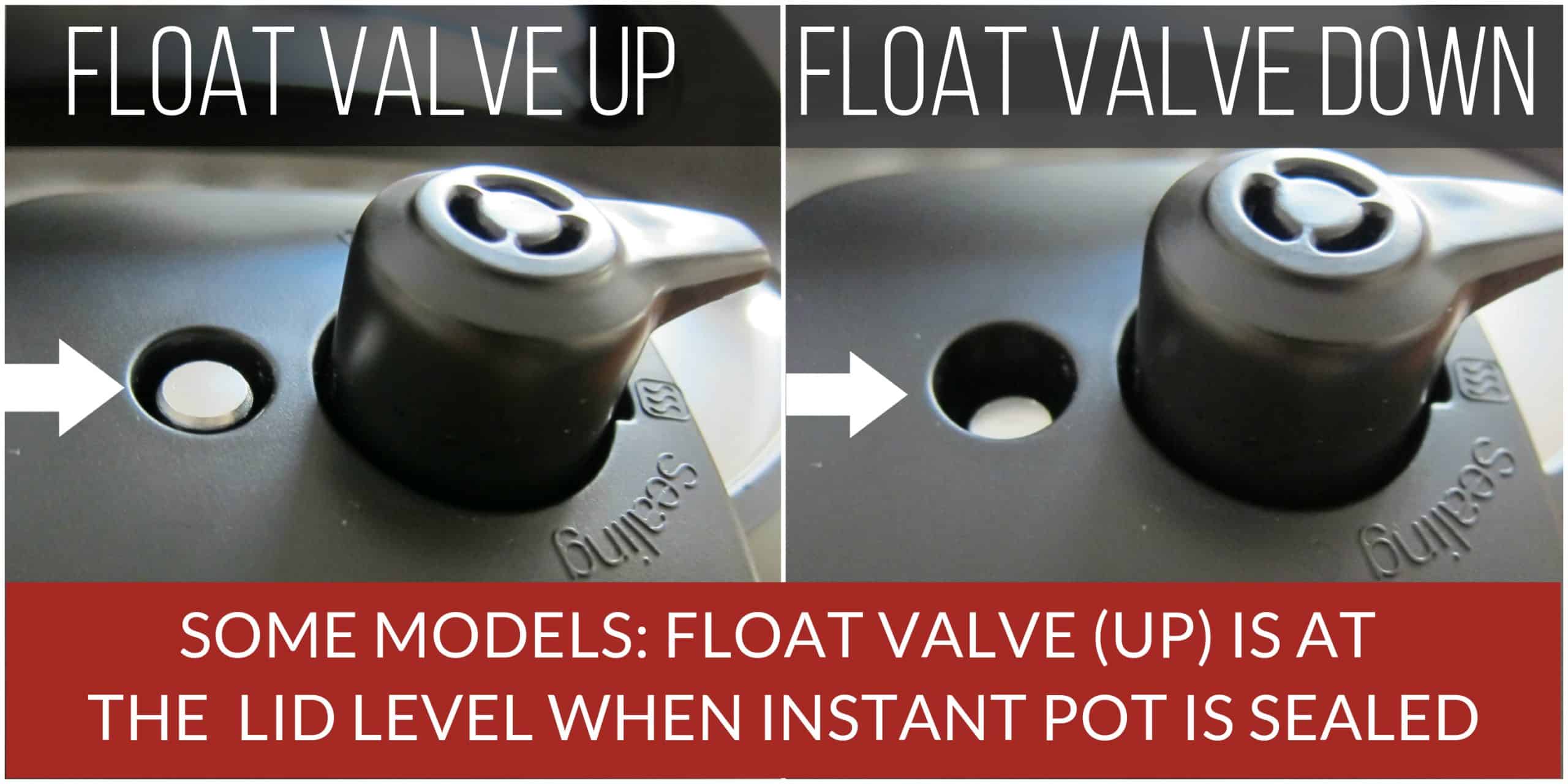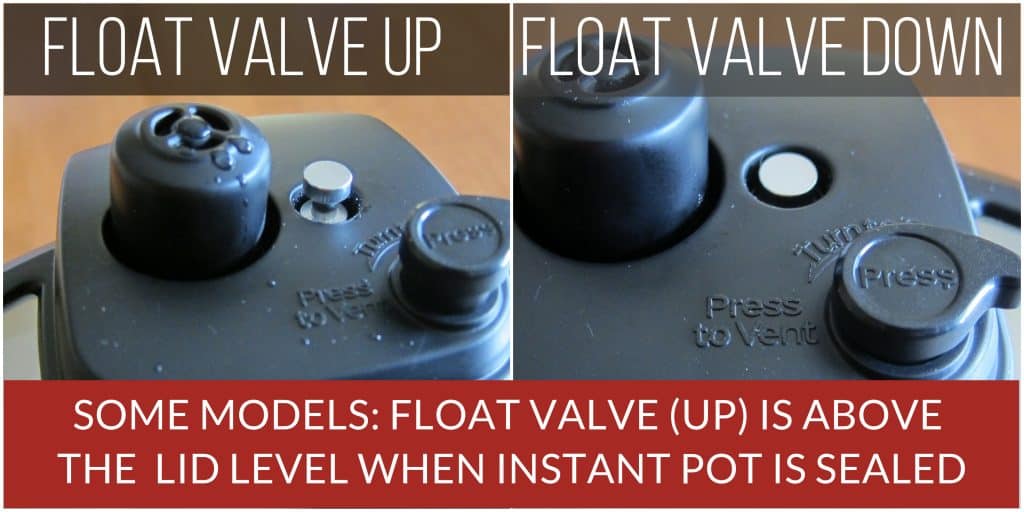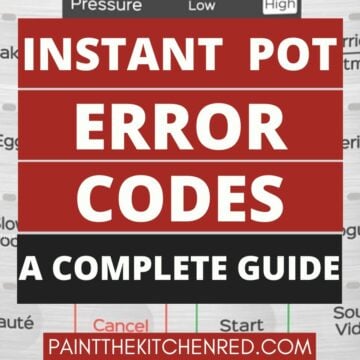In this guide to Instant Pot natural release vs quick release, you’ll learn when and how to use each method. Once the Instant Pot has finished pressure cooking, there are multiple ways that you can release pressure. Find out how to do a natural release and how to use the quick release method. [Video included]

This post contains affiliate links. As an Amazon Associate, I earn from qualifying purchases. Please read the disclosure.
Table of Contents
Difference Between Instant Pot Natural Release and Quick Release
When you first get your Instant Pot, you may encounter many unfamiliar terms. One common question is, “What is natural release, and how do I set my Instant Pot to natural release?”
There are a few ways to release the steam on electric pressure cookers like the Instant Pot:
- Natural Release: The Instant Pot’s pressure is released once it cools down and no steam is left. This causes the float valve to drop on its own. This is a slow release method.
- Quick Release: This method manually releases the pressure by forcing the steam out of the pressure release valve.
- Hybrid Methods: There are also a couple of hybrids of the natural release and quick release methods.
✏️ MORE RESOURCES TO HELP YOU USE YOUR INSTANT POT
- Instant Pot Instructions for New Owners
- How to Deglaze the Instant Pot
- How to Sous Vide in the Instant Pot
- Instant Pot Symbols and Icons
- How to Quick Soak Beans in the Instant Pot
- Instant Pot Troubleshooting
- Instant Pot Tips and FAQs
- How to Use the Pot in Pot Method
- Instant Pot Cooking Times
- How to Use Delay Start Button
- What is a Trivet and How to Use It?
Natural Pressure Release
What is Natural Release on Instant Pot?
Natural release is when you allow the pressure to decrease on its own. As the temperature inside the Instant Pot decreases, the pressure also decreases. Natural release is the most common pressure release method.
⎮ Note: It is also referred to as manual release or natural pressure release.
While the Instant Pot is cooling down and you let the pressure release naturally, the heating element inside the pressure cooker is still very hot. So, the food inside continues to cook, but at a slower pace.
When to use Natural Release?
Deciding whether to use quick release or a natural release depends on the type of food you’re cooking and the recipe you’re following.
In general, use the pressure cooker natural release method for the following:
- Longer-cooking foods: the food continues cooking even after the cooking cycle is complete.
- Foods with skin (e.g. potatoes, beans): the natural release method allows the skin to stay intact instead of bursting since the pressure and temperature decrease gradually. The pressure is released gradually, and there’s less movement inside the pot, which keeps food intact.
- Meats: natural release allows the juices to settle into the meat, making it tender and flavorful. This is especially useful for large cuts of meat. When you quickly release pressure, the pressure drops rapidly. This causes the meat fibers to compress, squeezing out fats and juices and leaving the meat tough and dry.
- Foamy foods: doing a quick release when cooking foamy foods like grains or pasta can cause a big mess because the foam can spurt out of the pressure release valve. A natural release allows the pressure and temperature to fall gradually, reducing the mess.
How to Natural Release Instant Pot?
- Once pressure cooking has been completed, the Instant Pot will chime and begin counting the minutes (if in Keep Warm mode).
- Wait for the float valve to drop on its own.
- Press Cancel and open the lid by turning it counterclockwise. You’ll hear a chime.
⎮ Tip: What is the best way to tell when natural release is done? The float valve will go down.
Instant Pot Quick Release
What is Quick Pressure Release?
Quick Release is when you manually release the pressure using the pressure release mechanism that your Instant Pot is equipped with by moving it from the sealing to the venting position. Different models have different ways of releasing pressure.
Different Types of Pressure Releases in Different Instant Pot Models

- Handle: Some Instant Pot models have a pressure release valve that is a venting knob with a handle. This steam release handle is turned from the Sealing to the Venting position. Older Duo models have this mechanism.
- Button: On some models, such as the Instant Pot Ultra, you use the steam release button on top of the Instant Pot, which you push down to Vent.
- Switch: In other models, such as Instant Pot Pro, you turn the pressure release switch from Seal to Vent.
- Display Panel: On some models, you select the pressure release method on the display panel instead of using a physical mechanism.
When to use Quick Release?
Quick Release (QR) immediately stops the cooking process for fast-cooking foods. It is the quickest pressure release method.
Use quick release for:
- Delicate Foods: Tender vegetables and fish get overcooked with natural pressure release. Quick release prevents overcooking.
- Quick-Cooking Foods: Chicken breasts and lean cuts of pork or beef can dry out if cooked too long. Quick release helps maintain moisture. Eggs also benefit from quick-release.
- Recipes with Multiple Pressure Cook Cycles: When you need to add ingredients mid-cooking, quick release allows you to stop cooking, add ingredients, and resume without overcooking the ingredients.
⎮ Tip: Quick release is generally better for foods where you want to maintain a firmer texture or stop the cooking process immediately.
How to Quick Release Instant Pot?
- Once pressure cooking has been completed, the Instant Pot will chime and begin counting the minutes (if in Keep Warm mode).
- Move the steam release valve from Seal to Vent position. A jet of steam will begin coming out of the steam release valve.
- Once all the steam is released, the float valve will drop down.
- Press Cancel and open the lid by turning it counterclockwise. You’ll hear a chime.
⎮ Warning: Be very careful of the hot steam. Keep your hands and face away from the path of the steam!
Timed Natural Release (e.g. 10 or 15-Minute Natural Release)
What is a Timed Natural Release?
A timed natural release is also called 10 minute natural release or 15 minute pressure release (NPR10 or NPR15). It is a hybrid between quick release and natural release. You let the pressure naturally release for a few minutes and then manually release the rest.
When to use a Timed Natural Release
Use timed natural release for:
- Rice and grains: Using a timed release allows excess moisture to be absorbed, reducing mushiness.
- Longer-cooking vegetables: Vegetables such as carrots, potatoes, and sweet potatoes benefit from a timed release. This prevents overcooking while still allowing for a tender texture.
- When You’re Short on Time: A timed release offers some benefits of natural release while reducing cooking time. Use a timed release for any recipe that calls for natural release but requires speeding things up.
How to Do a Timed Natural Release
- Once pressure cooking has been completed, the Instant Pot will chime and begin counting the minutes (if in Keep Warm mode).
- Allow 10 or 15 minutes to pass (or whatever amount of time you can afford).
- Release the remaining pressure from your Instant Pot as detailed in the quick release section.
Quick Pressure Release in Bursts
What is Quick Release in Bursts
Quick release in bursts is also referred to as intermittent pressure release. It’s a modified version of quick release. This method is slower than a quick release but faster than a timed natural release.
When to do Quick Release in Bursts
When you release steam in small bursts, you avoid messy froth and food from coming out of the steam release handle. Use this method for:
- Starchy foods: This method prevents foam from spraying out of the valve along with the steam. It’s useful for pasta, oatmeal, and soups with starchy content.
- If you’re new to the Instant Pot: If you’re unsure if a food will foam or when trying a new recipe that might be prone to sputtering.
How to Do a Quick Release in Bursts
- Once pressure cooking has been completed, the Instant Pot will chime and begin counting the minutes (if in Keep Warm mode).
- Turn the steam release mechanism to Vent for a second and move it back to Seal. Wait a couple of seconds.
- Repeat this process until the pressurized steam coming out is less forceful; at this point, you can do a regular quick release and release any remaining pressure.
- The float valve will fall into the down position.
- Press Cancel and open the lid by turning it counterclockwise. You’ll hear a chime.
Float Valve Positions
When the Instant Pot is under pressure, the float valve is in the Up position. Once pressure has been released, the float valve drops to the Down position. At that point, it’s safe to open the lid.


FAQs
You don’t need to set the Instant Pot to natural release. It’s a matter of not doing vs doing. You just let the float valve go down on its own. This will happen when the Instant Pot’s inner temperature goes down over time, and that, in turn, reduces the pressure inside.
You can press Cancel to turn the Instant Pot off, but it does not need to be off. However, pressure cooking needs to be completed.
Natural release takes from 10 to 40 minutes to let the pressure release on its own. It depends on the quantity, density, and type of food. Some Instant Pot recipes include this time in the cooking time, but some do not. Be sure to take the natural release time into account.
⎮ Note: If your Instant Pot is very full, it can take an hour to release the pressure naturally.
It may seem scary to have all that steam coming out of the pressure valve when you use a quick release, but it’s perfectly safe IF you take the right precautions. Don’t place your hands of face anywhere near the path of the steam.
In general, you should use a natural release for meats. However, when meat is completely submerged in liquid in the inner pot, quick release doesn’t have as big of an effect on its tenderness.
Quick release can take a long time if you have a lot of food in the electric pressure cooker. The larger the quantity of food the long it takes for all the steam to be released.
Quick release can take a long time if you have a lot of food in the inner pot. The larger the quantity of food the long it takes for all the steam to be released.
However, there is a possibility that the steam release valve is damaged or there may be food obstructing the steam release handle. Allow the pressure to release naturally and then clean the steam release handle with a small brush.
They are two separate things. The Keep Warm function allows the food to stay warm after pressure cooking is complete. While the Instant Pot is cooling down after pressure cooking is done, the inside pressure gets released slowly. Once the pressure is fully released, the Keep Warm function gets activated.
You can turn Keep Warm on or off for pressure release. It has no effect on the pressure release process. Keep Warm setting off, press Cancel.
Electric pressure cookers have multiple safety features that prevent you from opening them while there’s still pressure inside. However, if you were able to force the lid open, you would encounter an explosion of the contents and you can get seriously burned.
🥣 RECIPES FOR BEGINNER INSTANT POT USERS
Instructional Video
If you’re having trouble seeing the instructional video below, disable your adblocker temporarily and refresh the browser.
If you found this article to be helpful, please share it on social media using the social media share buttons at the top and bottom of this post. Thank you so much!






Phillip says
I have a niva instant pot 9 in 1 I’m doing a 1 lb flank steak the recipe calls for 50 minutes and 30 minute natural release does that mean when I start the cooking process I need to push my button down and then do a natural release at the end of cooking thanks for any help Philip
Paint the Kitchen Red says
Hi Phillip, you’ll program the Pressure Cook function for 50 minutes and make sure the steam release button is UP (sealing). The float valve will go up eventually and soon after, the ON will become 00:50. When the timer counts down to 00:00, it will then count UP from 00:00 (if you have Keep Warm mode on). When the timer counts up to 00:30, push the steam release button down to release any remaining pressure. Hope that helps.
Ellie says
I’ve made a pasta recipe and did a quick release and ended up with tomato everywhere and messy lid to clean
Should I have waited for longer to release the pressure to prevent this ?
Paint the Kitchen Red says
Ellie, the problem with pasta is it can become overcooked and mushy if you let it cook for too long. You have a couple of options: cook for a couple minutes less and increase the steam release time by that much AND do a intermittent pressure release (release, stop, release, stop…)
Samantha says
I have the 6 qt Viva it came with out the pressure relief valve.
How do I know which to order
Paint the Kitchen Red says
Samantha, it depends on the model. If you have a button style of pressure release, you order the valve without a handle. If you don’t have the button, order the one with a handle (allows you to turn it from seal to vent).
Sandra says
I have 2 chicken breast seasoned with sage and onion salt, celery salt, 4 peeled potatoes and 4 (cut in large chunks). 2 cups of water.
Question is, do I use pressure value up or down? Im confused as to when I should leave value up or down? Am I correct to say I need the leave the pressure valve up to cook the meat thoroughly?
?
Paint the Kitchen Red says
Sandra, if you’re referring to the steam release button being up or down, it needs to be up i.e. in sealing position.